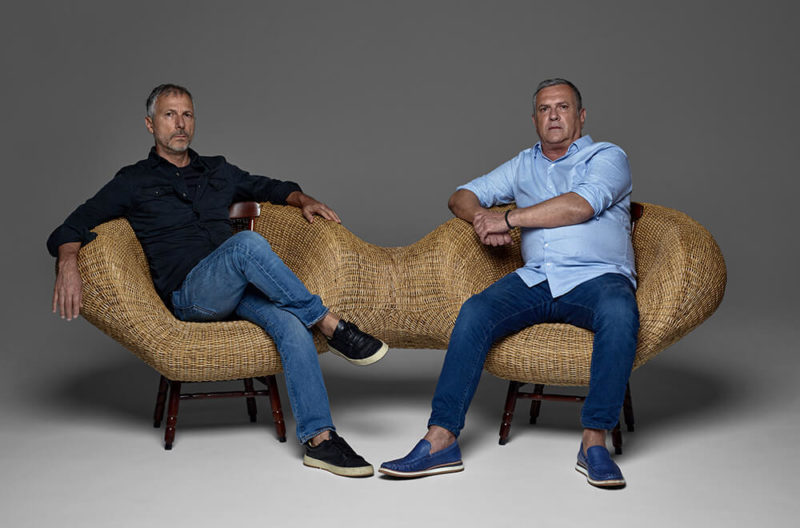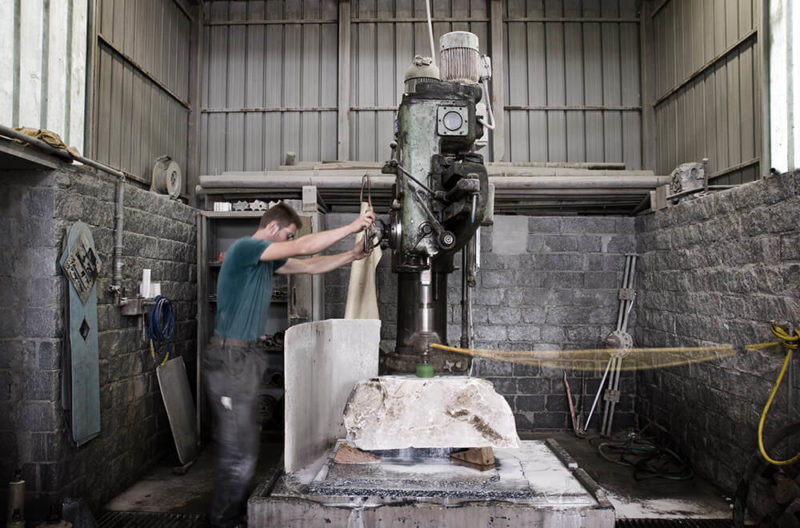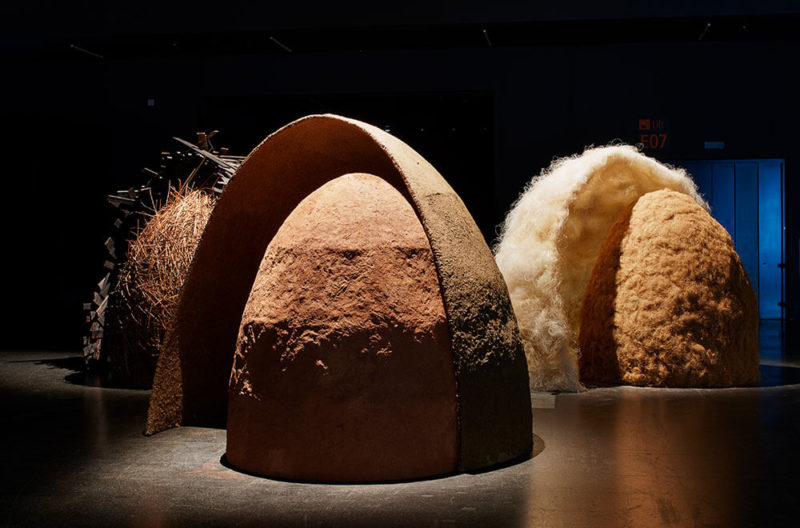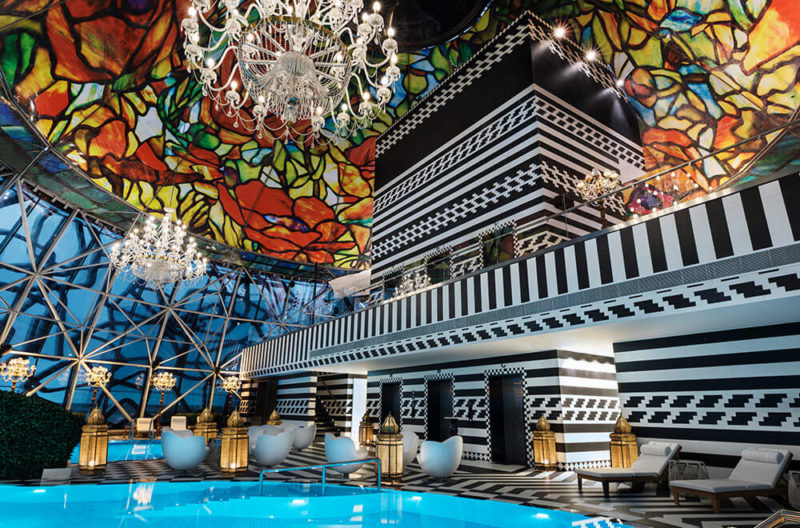Fernando Campana (1961-2022)
A tribute to the Brazilian designer whose playful creativity and generous spirit lay at the heart of his life and work.
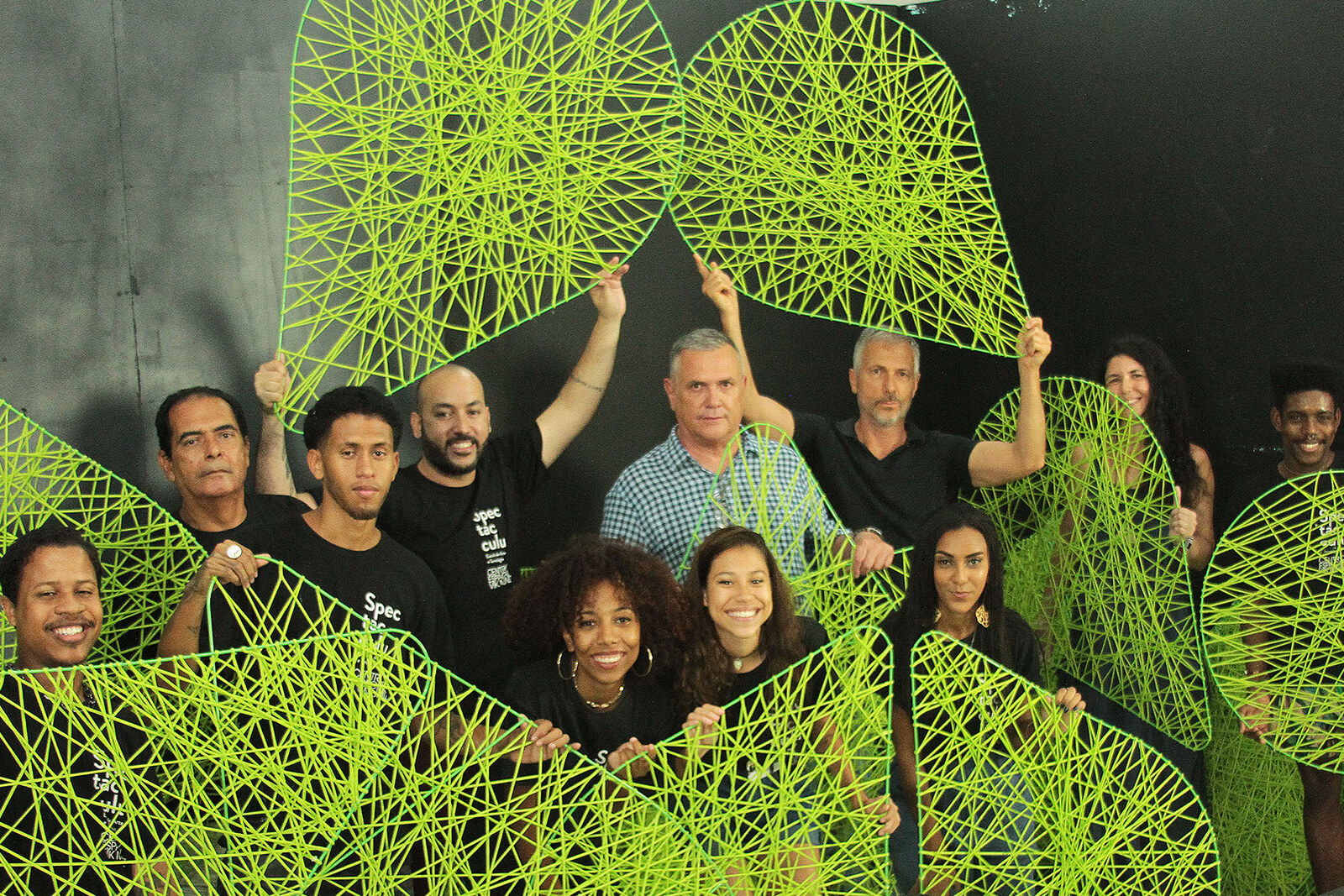
Fernando Campana (in blue checked shirt) and Humberto Campana (to his left) with team from Spetaculu, at the installation of ‘Campana Brothers – 35 Revolutions’, Museum of Modern Art, Rio de Janeiro, 2020
COURTESY: Estudio Campana
THIS WEEK WE heard of the untimely death of Brazilian designer Fernando Campana. One half of the globally renowned design duo the Campana Brothers, Fernando was perhaps less vocal than his brother but no less intrinsic to their shared vision.
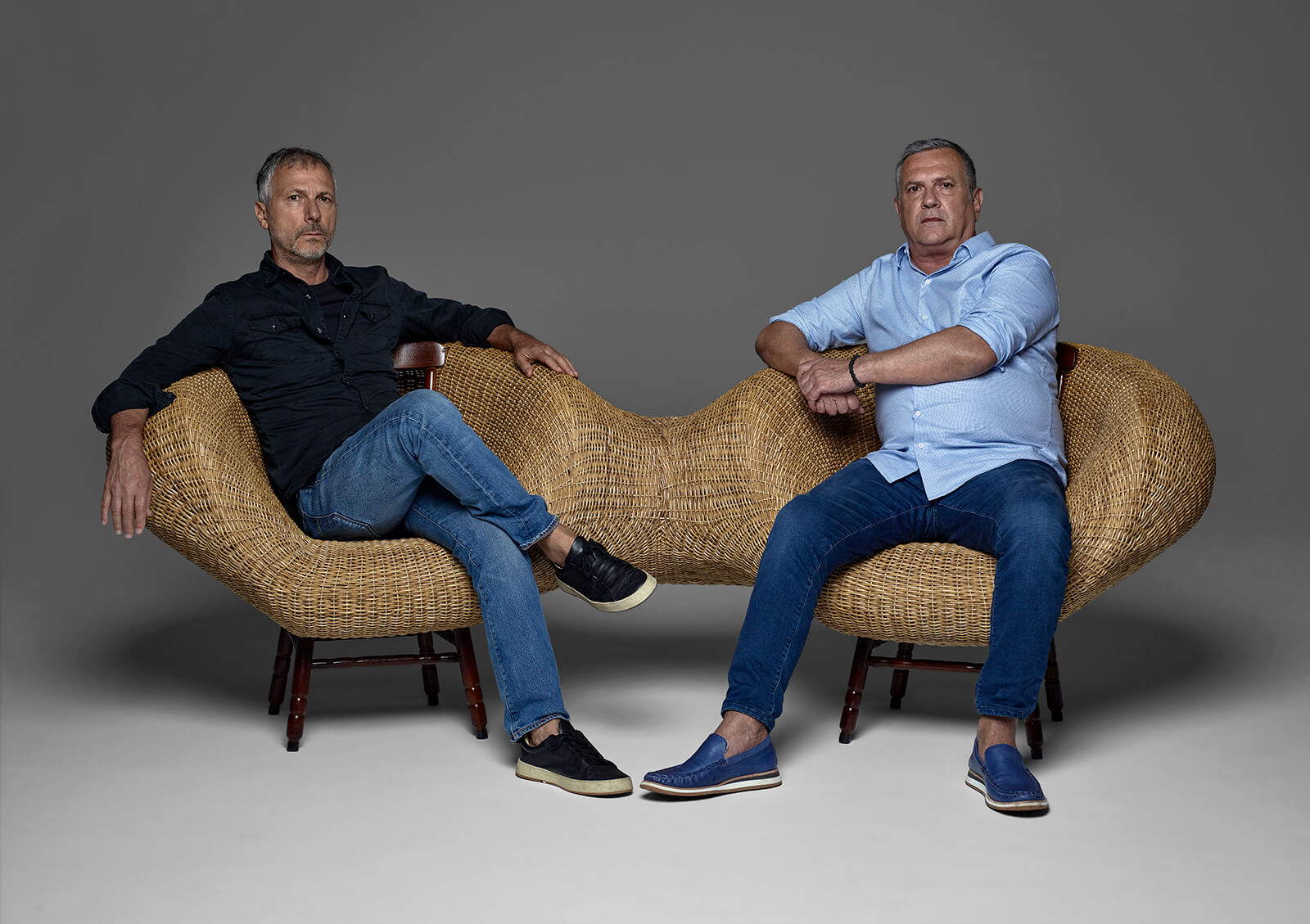
Humberto (left) and Fernando (right) Campana sitting on ‘Dois Irmaos – Two Brothers bench’
COURTESY: Estudio Campana / PHOTOGRAPH: Bob Wolfenson
This encompassed the exuberant creation of some of the most radical and ground-breaking pieces of limited edition design of the last thirty-five years and the founding, in 2009, of Instituto Campana, a not-for-profit organisation using design as a tool for social transformation.
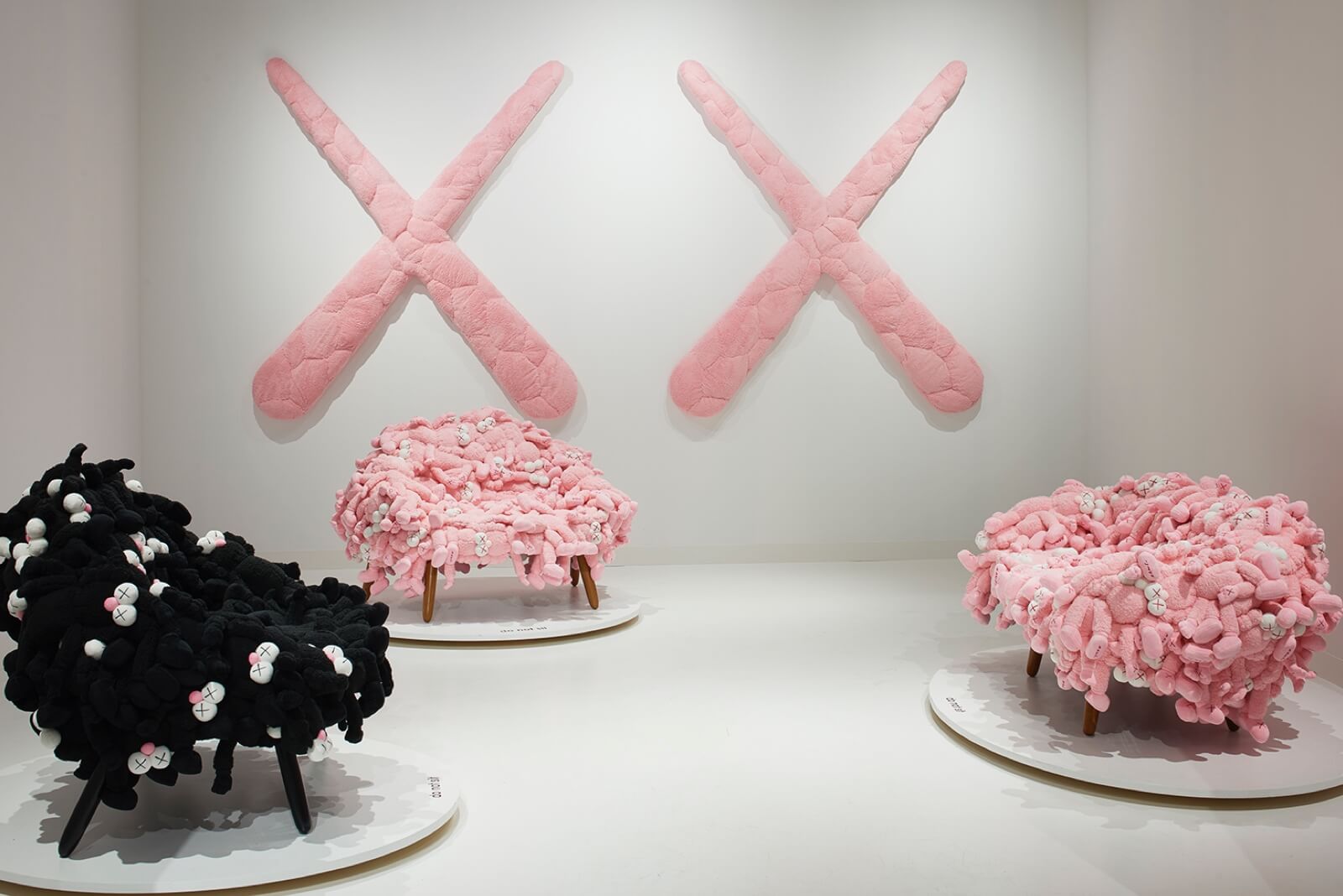
KAWSxCampana collaboration at Friedman Benda, 2018
COURTESY: James Harris
Besides the grievous loss to his family and friends, what the world has lost is currently by chance acutely visible in the duo’s first exhibition at Luciana Brito Galeria in São Paulo, which opened in November. Titled ‘Polifonia Campana’, it celebrates Estúdio Campana’s fantastical, multidisciplinary ways of working – and the creative and ethical ambition of its creations.
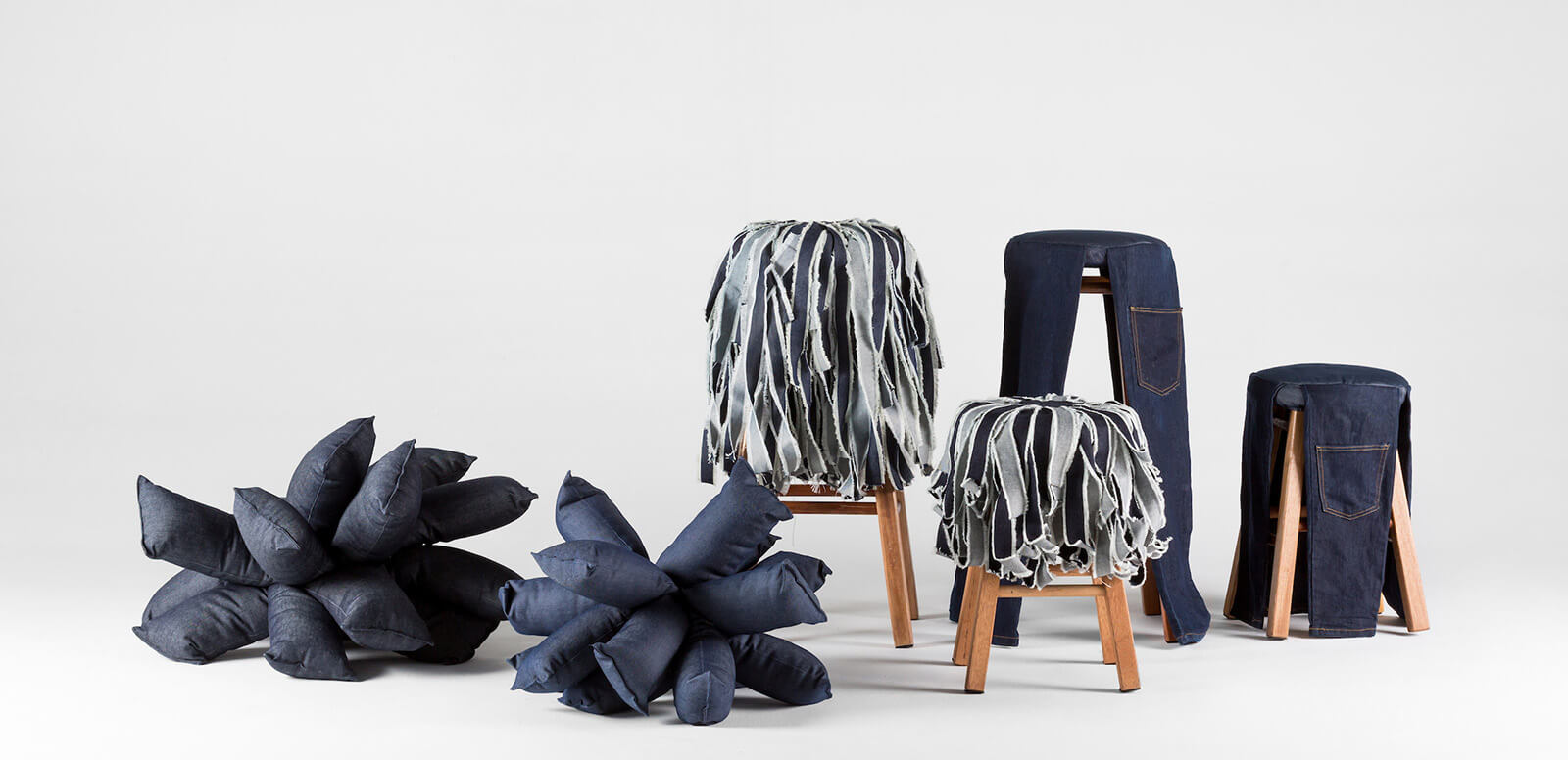
Fernando and Humberto Campana, ‘Jeans Collection’, developed with the Projeto Arrastão: ‘BlackPower’ (bench), ‘MultiPocket’ (high stool, low stool), ‘Estrela’ (Star – cushion).
COURTESY: Studio Campana
Maria Cristina Didero, curatorial director of Design Miami/, comments on the gallery’s website: “Estúdio Campana … has always attributed several meanings to the word ‘transformation’, converting ordinary objects into precious ones. With this latest project, we are witnessing the transformation of a collection of objects into a collection of works of art.”
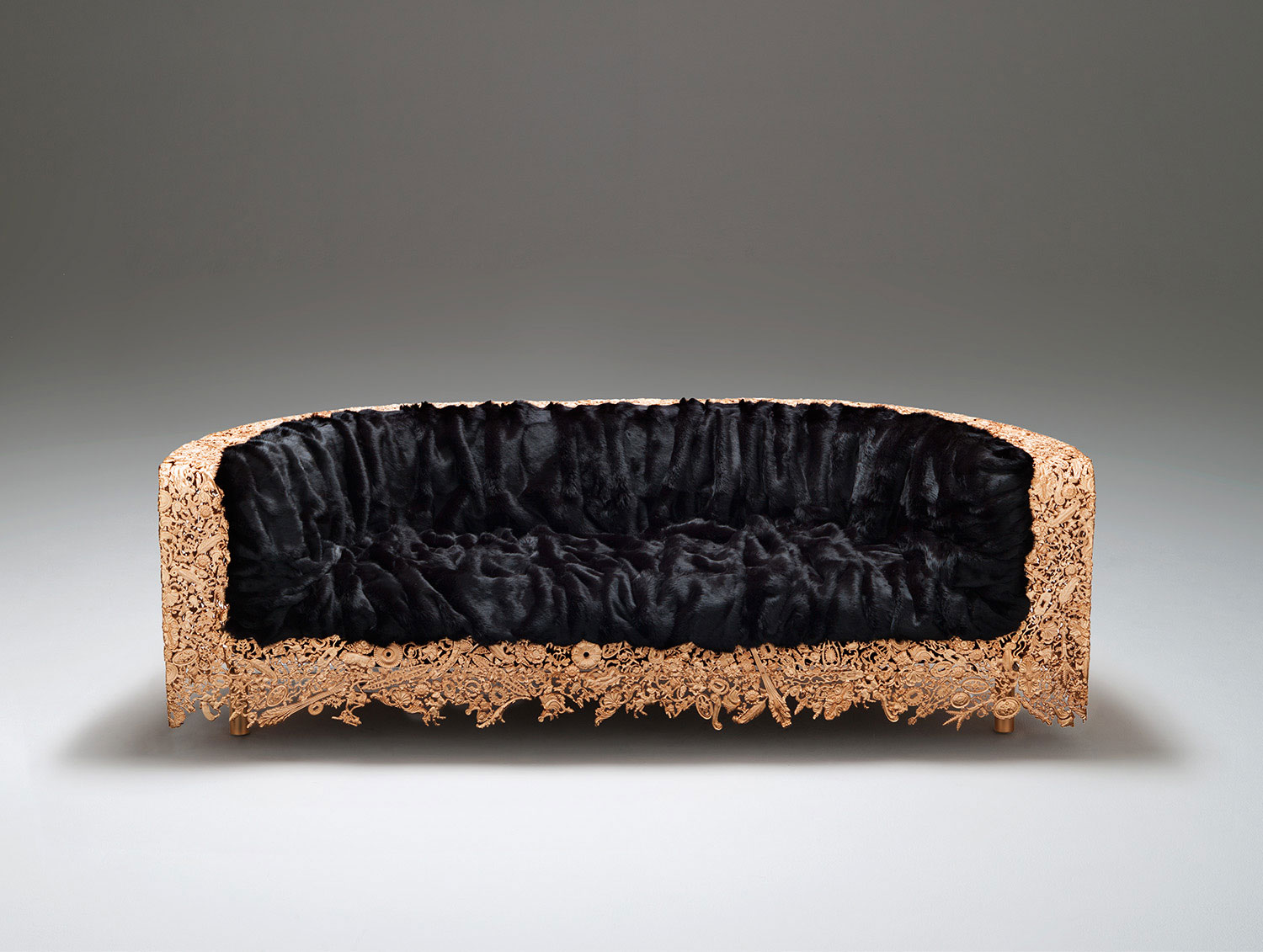
Campana Brothers, ‘Numa’ sofa, 2014
COURTESY: David Gill
Fernando, born in 1961 in Brotas, near São Paulo, the younger of the two brothers, trained as an architect at the São Paolo School of Fine Arts from 1979 and 1981. Soon after, he began to help out his brother Humberto in his art studio. So fertile and genial was the collaboration that in 1984 the brothers founded their studio, drawing for inspiration and materials on the craft traditions of Brazil and on the natural world and urban chaos surrounding them.
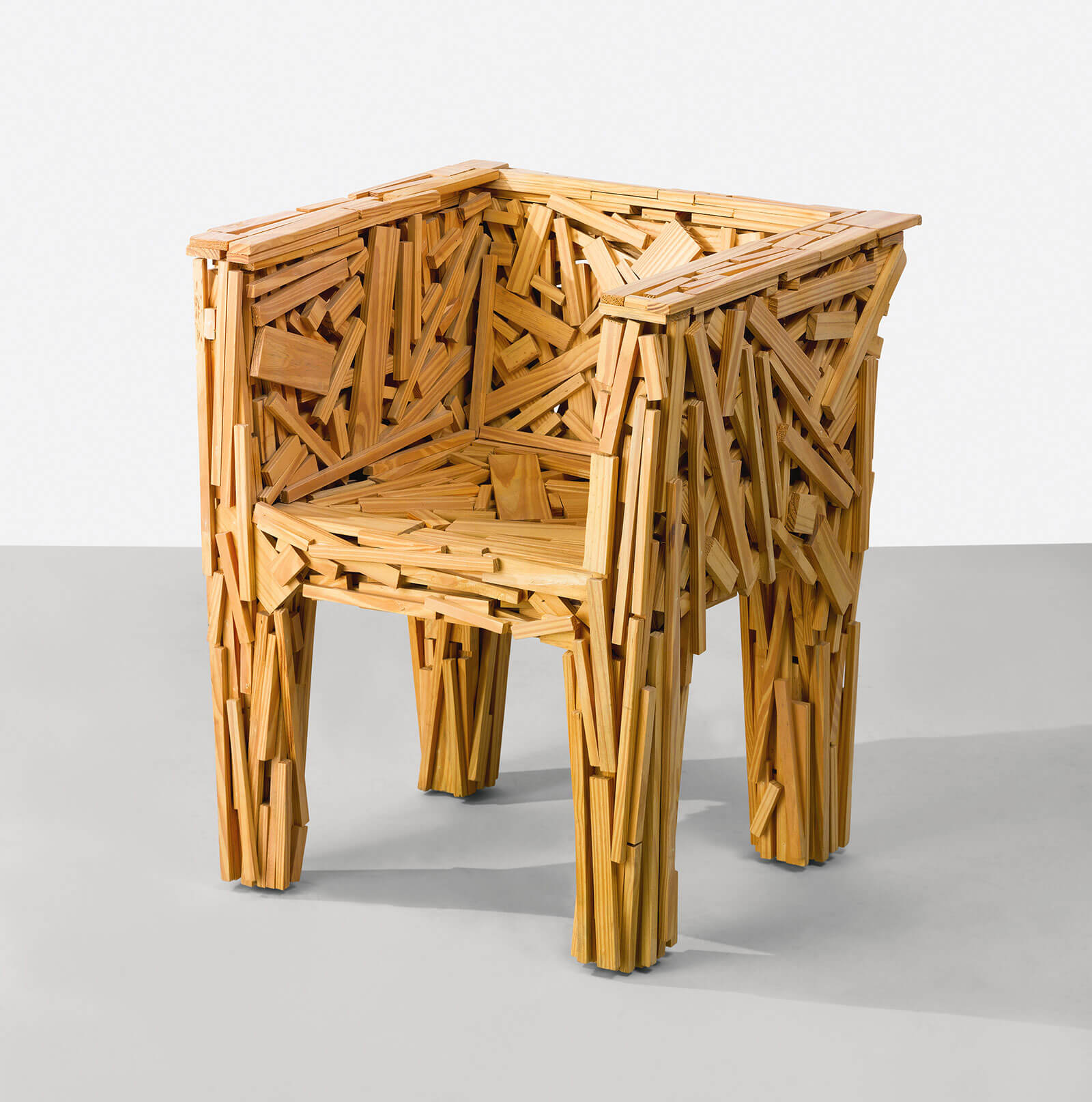
Fernando and Humberto Campana, ‘Favela’ chair, 2003
COURTESY: Sotheby’s
Self-taught, and shaking free from the strictures of Brazilian modernism, their breakthrough came in 1991, with the ‘Favela’ chair, an anarchic assembly of fragments of wood. Another famous piece is the ‘Vermelha’ from 1998, its seat randomly woven from red rope. Picked up by the Italian manufacturer Edra, these works caught global attention.
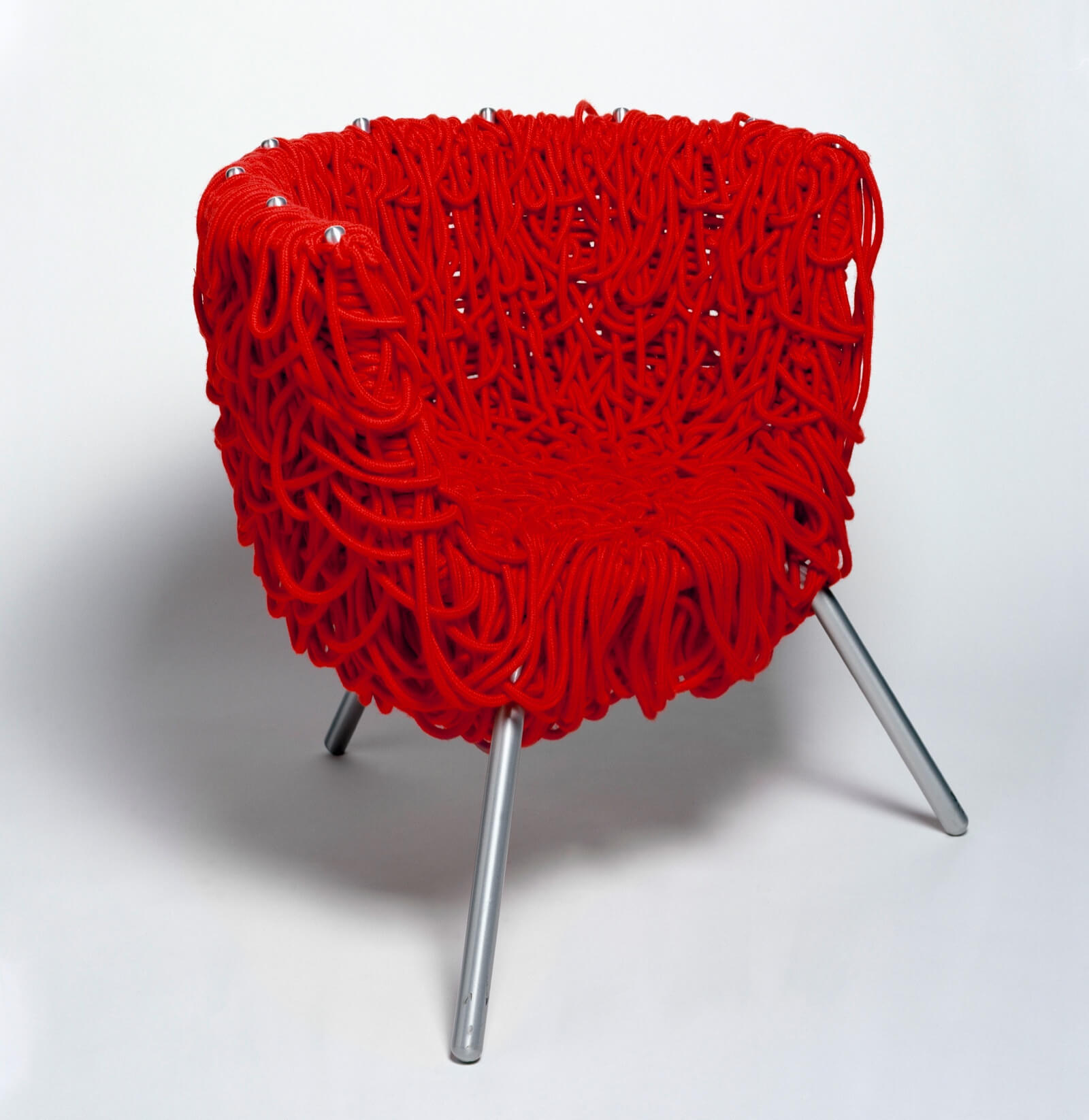
Humberto and Fernando Campana, ‘Vermelha’ armchair, 1993, Edra
COURTESY: © Fernando & Humberto Campana-photo Centre Pompidou, MNAM-CCI, Dist RMN-GP
Their mass production marked, as gallery Friedman Benda, a longtime collaborator, suggests in a tribute on their website, “the first time that designers from South America became leading lights in the European design industry.” Since then they have worked with many international brands, with a practice that has expanded also into interior design and architecture.

Art Lounge, designed by Humberto and Fernando Campana (NEW Hotel, Athens)
COURTESY: NEW Hotel Athens
Other well-known series include the armchairs and sofas constructed from agglomerations of stuffed animals, the ‘Sushi’ collection of furniture formed from tightly rolled, salvaged carpeting and rubber – as well as cabinets and seating covered in the alluring skin of the giant Pirarucu fish, specially bred on Amazonian fish farms.
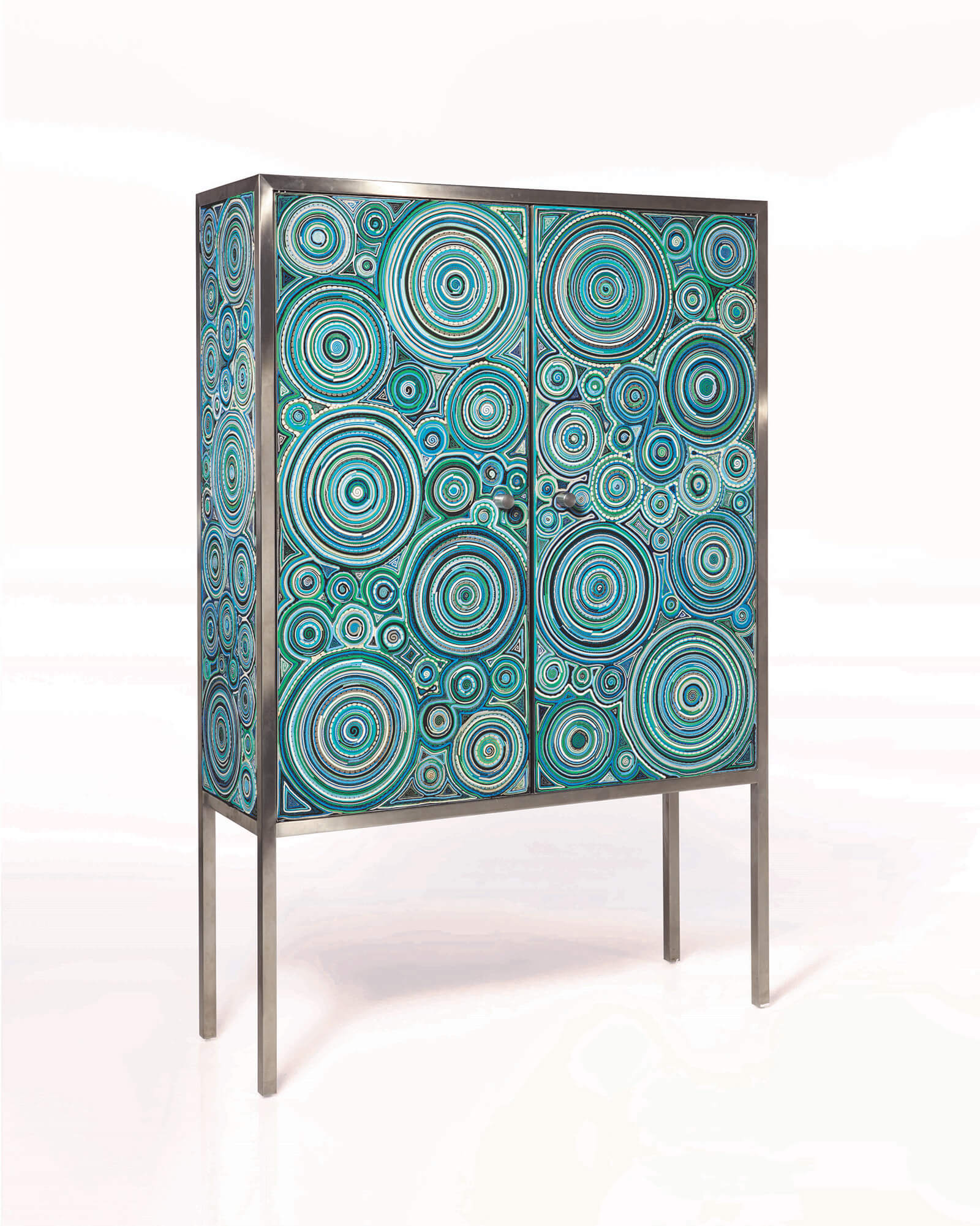
Fernando and Humberto Campana, ‘Sushi’ cabinet, circa 2013. (Estimate $20,000 – $30,000. Sold for $47,500)
COURTESY: Sotheby’s
In an interview with The Design Edit at the time of their major retrospective at the Museum of Modern Art, Rio de Janeiro, in 2020, Humberto described their shared practice: “We are storytellers. We take mental notes, mental pictures of things that we see, dream snapshots, and experiences that affect us – and we create from that. The unique materials we then choose to execute those ideas add yet another layer to the stories.”
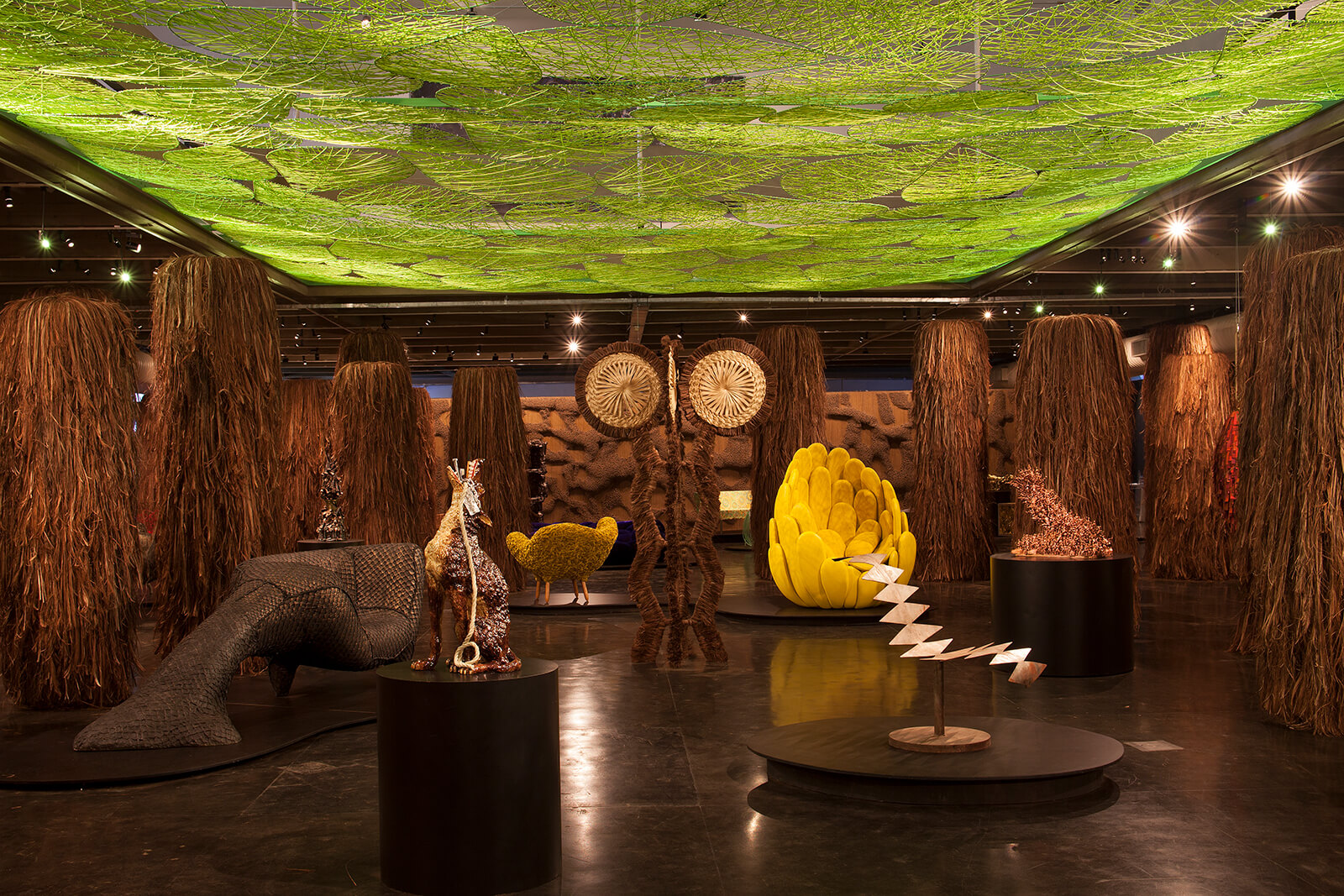
Installation view ‘Campana Brothers – 35 Revolutions’ at Museum of Modern Art, Rio de Janeiro, 2020
COURTESY: Estudio Campana / PHOTOGRAPH: Fernando Laszlo
Key to their achievement has been their determined defence of their own freedom to play. According to Friedman Benda, in recent years, “Fernando has devoted himself more and more to his studio, creating collages which have his characteristic inventiveness, lightness of touch, and economy of means.”
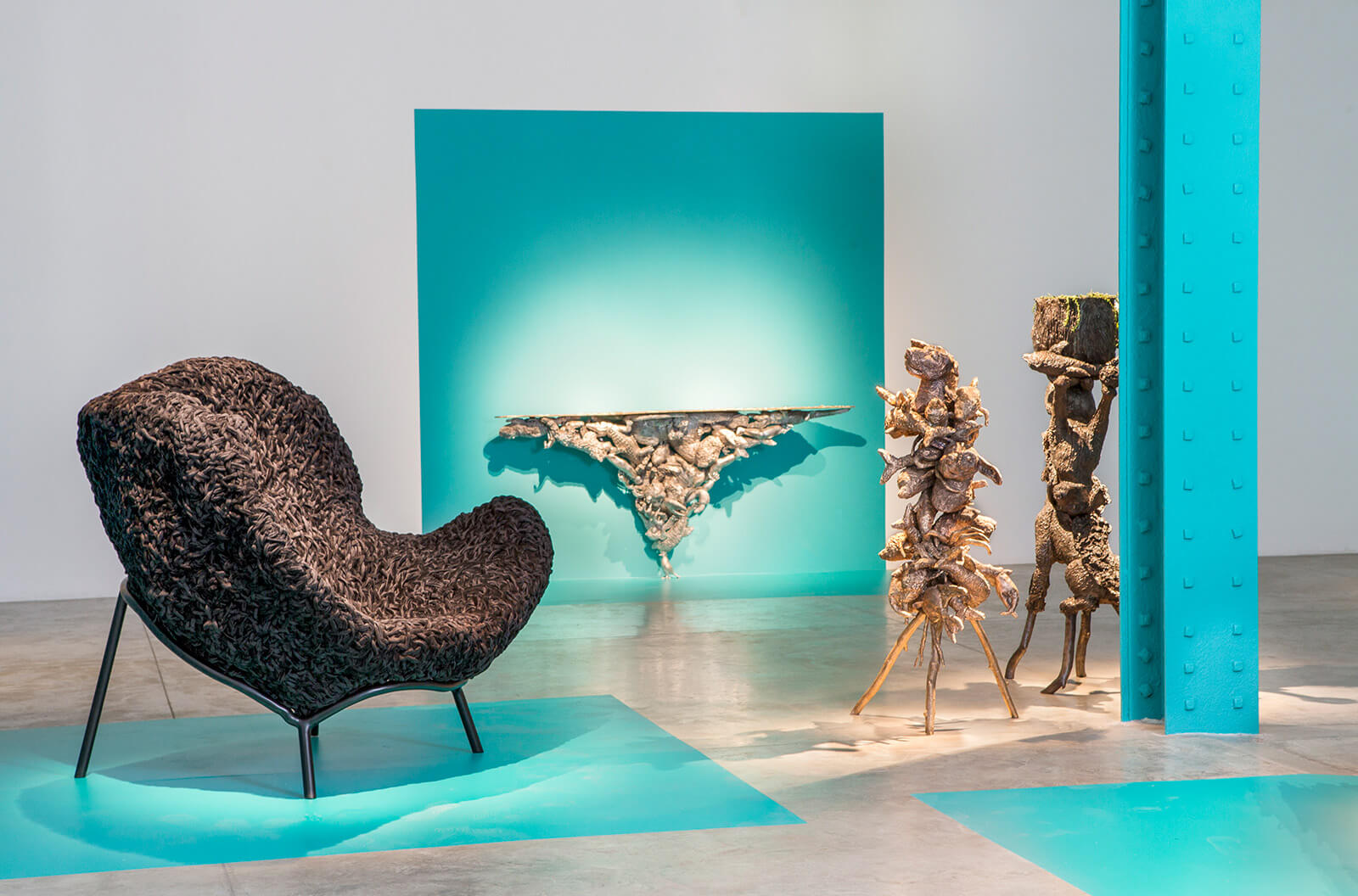
Installation view, Campana Brothers ‘Hybridism’, 2017
COURTESY: Friedman Benda and Estudio Campana / PHOTOGRAPH: Daniel Kukla
Among tributes, a recurring theme among those who knew him is their admiration for Fernando as a remarkable person. In a comment to Wallpaper, Maria Cristina Didero said: “He had a special and unique approach to life: he deeply loved his work, and together with his brother Humberto, he conceived it as a mission to help other people through creativity and fun.”
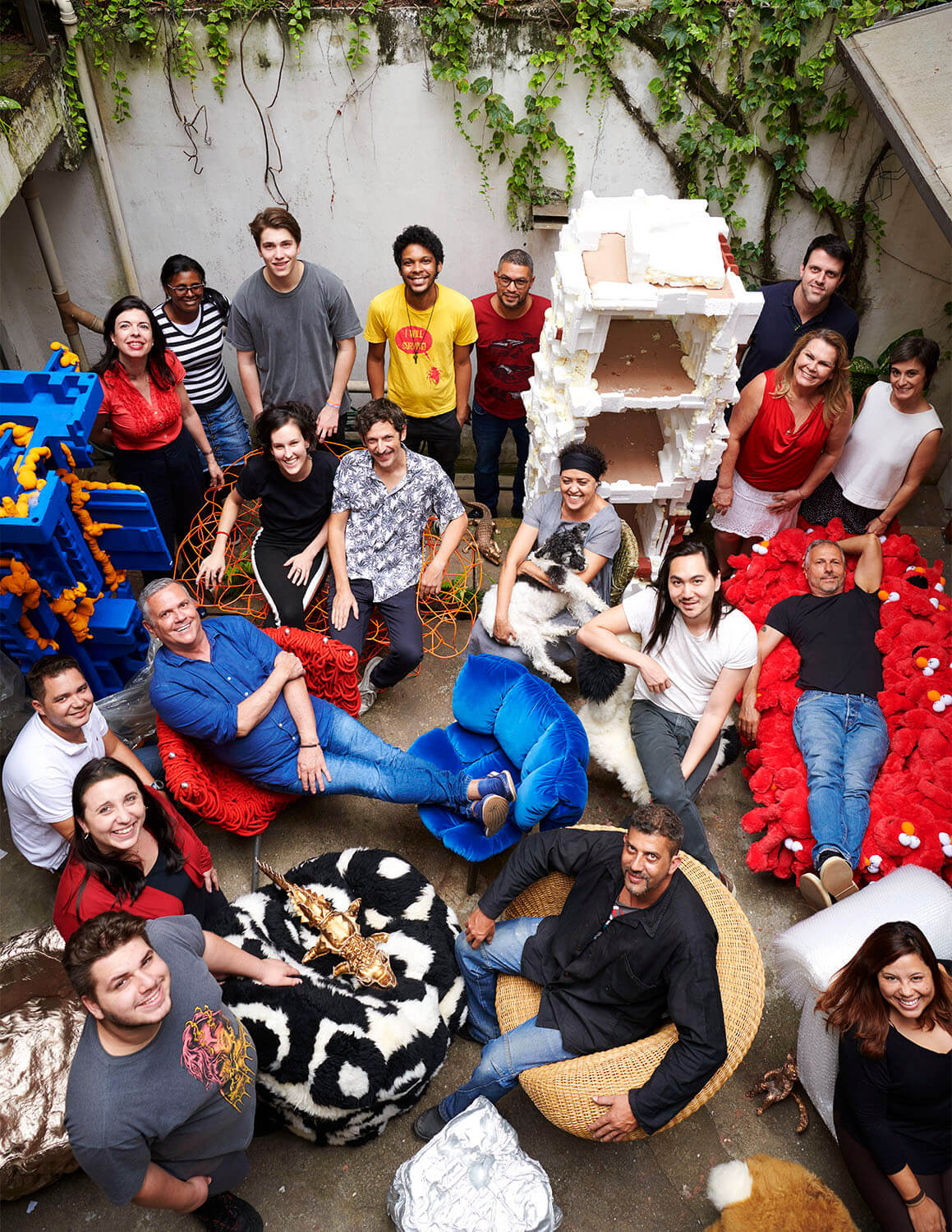
Fernando and Humberto Campana with their team of artisans and staff, São Paulo
COURTESY: Studio Campana / PHOTOGRAPH: Jason Schmidt




